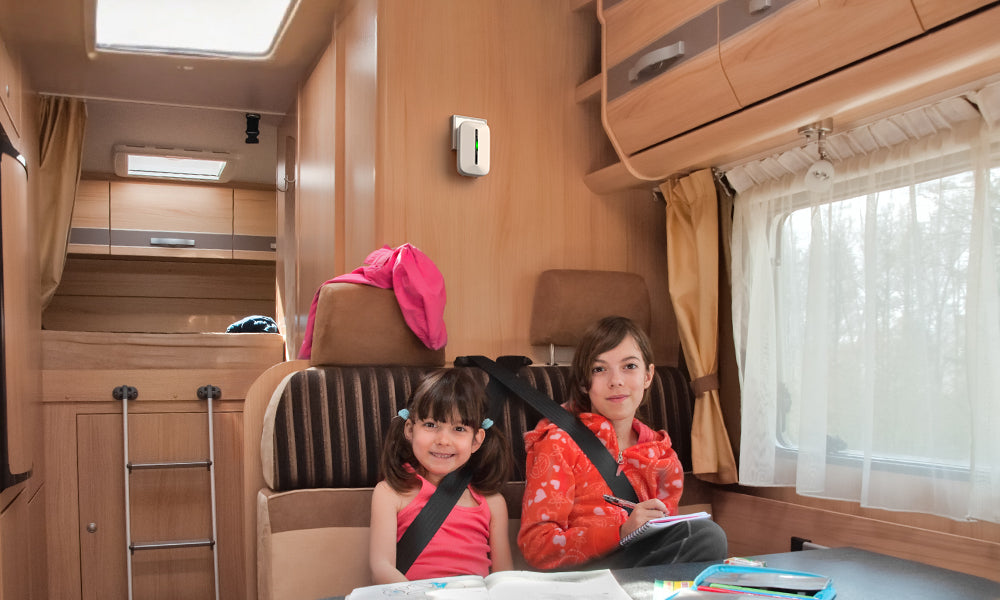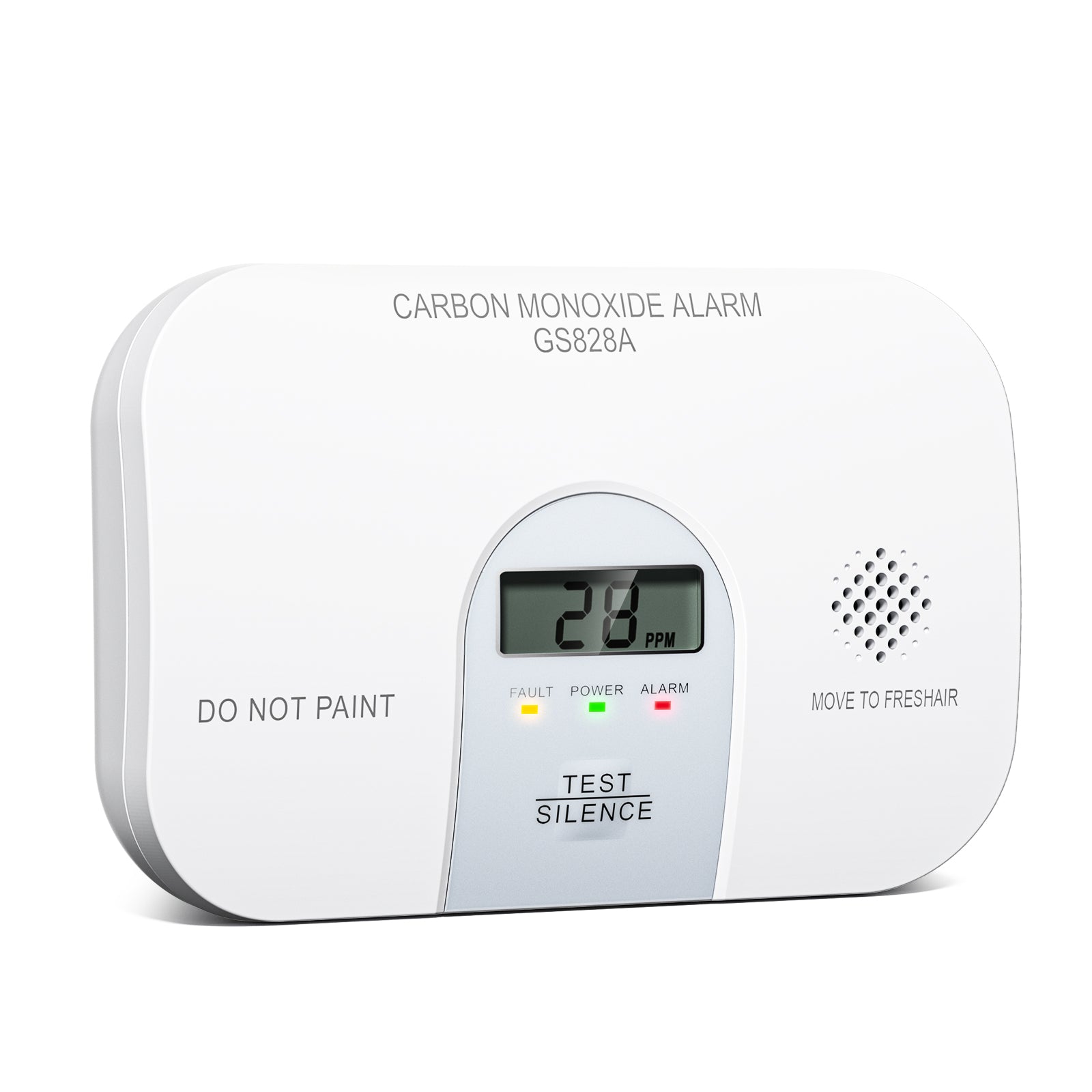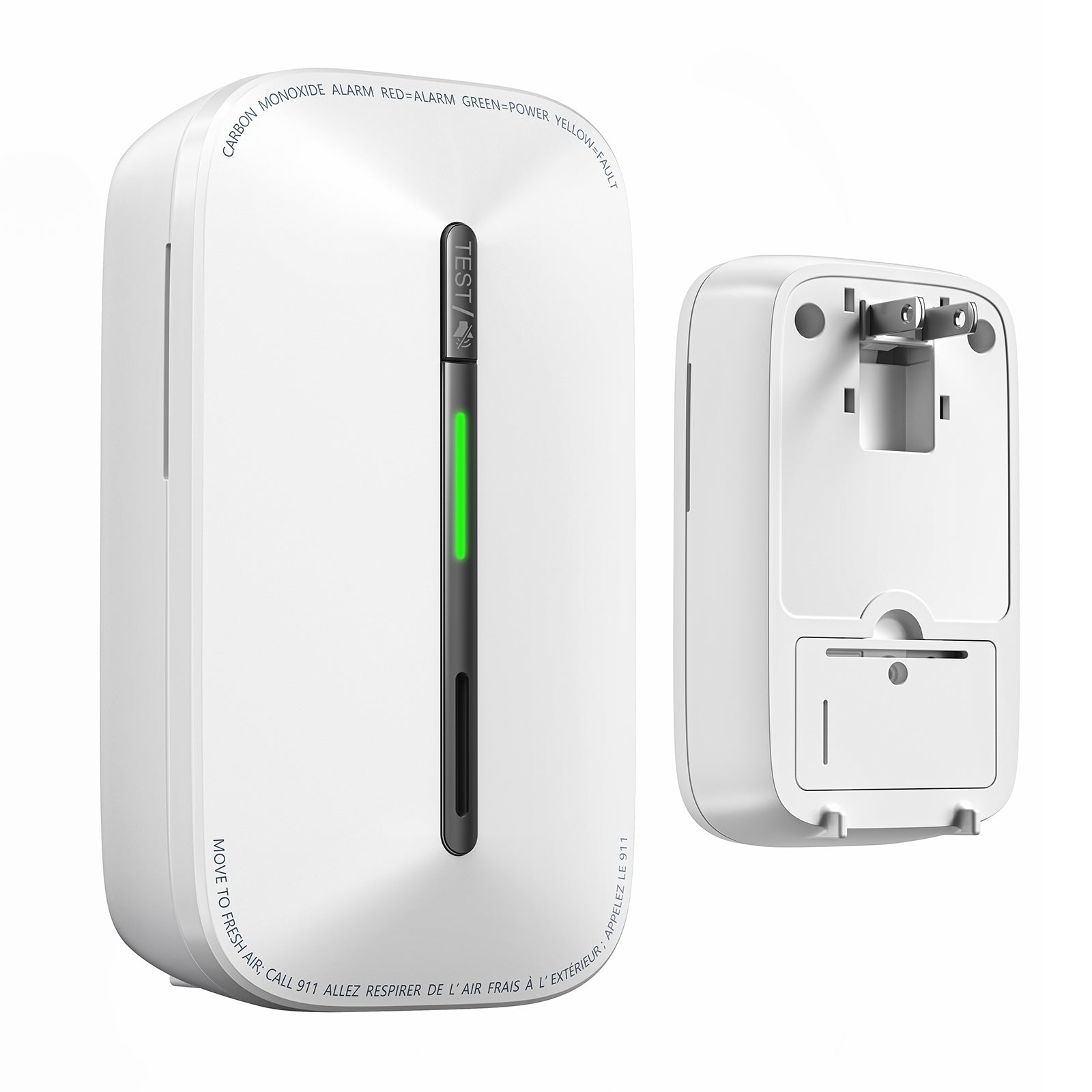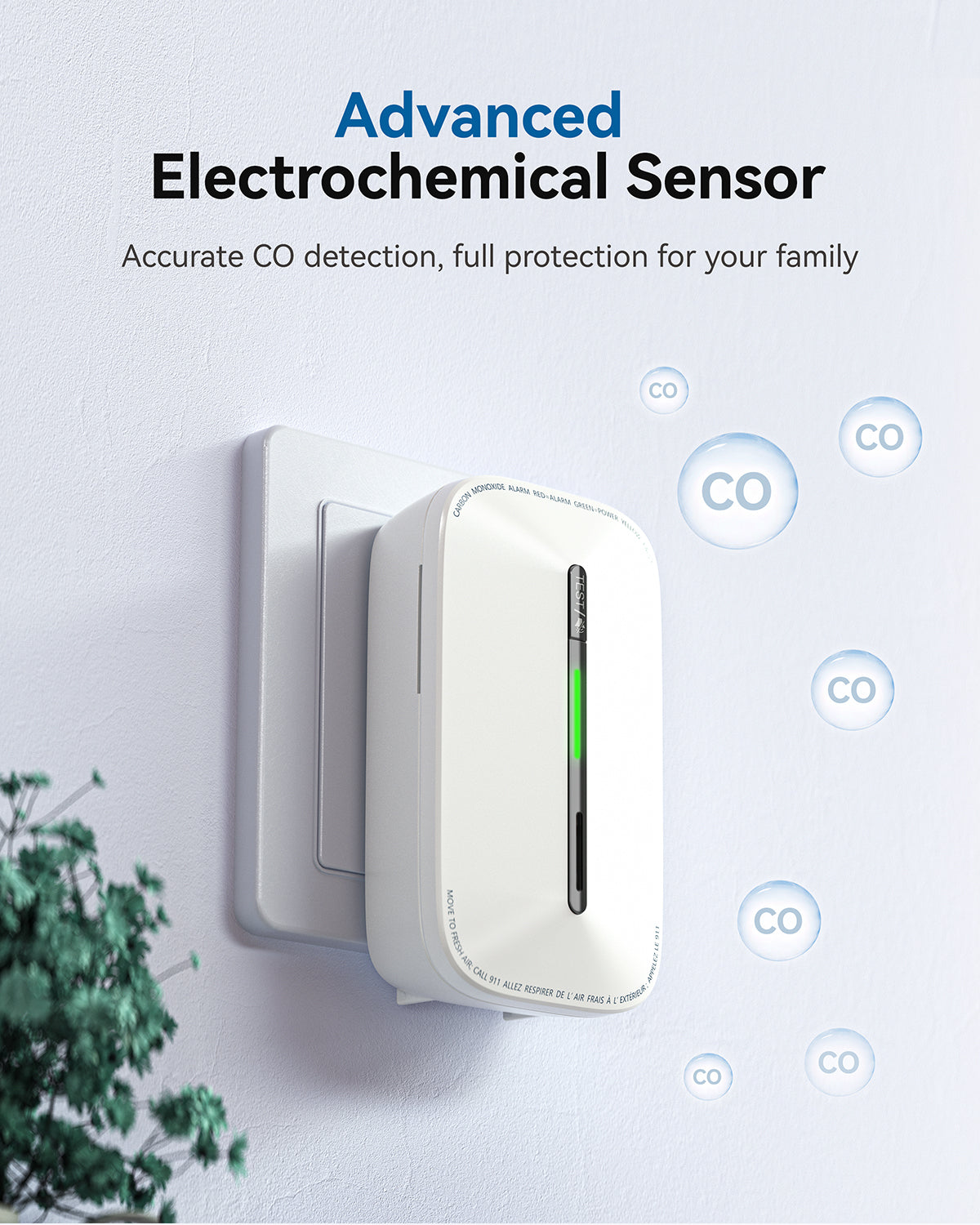Carbon monoxide (CO) is a colorless, odorless gas. It is also one of the most dangerous and silent killers in your homes. Often called the "silent killer," CO poisoning can occur without you even realizing it. You won't see it, smell it, or taste it—until it's too late. This makes carbon monoxide particularly lethal, as people are often unaware that the gas is present in their houses, filling the air and putting their lives at risk.
The most convient way to detect this harmful gas is through a carbon monoxide detector, and this is where many people overlook an important factor: where you place the alarm. Proper placement is key to ensuring that your CO detector works at its best and provides the protection your home needs.
Why the Placement of Your Carbon Monoxide Detector Matters?
The Problem with Incorrect Placement
When it comes to CO detectors, many homeowners and renters make a critical mistake: they install the alarms in locations that are not ideal. Installing a CO detector in the wrong place can reduce its effectiveness and even make it completely ineffective when it matters most.
For example, placing the alarm too close to a window, a door, or an air vent can cause the detector to be "falsely triggered" by drafts. Similarly, putting it near a heating appliance or stove might prevent the alarm from detecting dangerous CO levels at all. Even if the alarm is installed, if it's not positioned correctly, the chances of detecting a CO leak in time are significantly reduced.
The Goal: Ensuring Maximum Effectiveness
Now, you might wonder, "Why should I worry about where I place my CO detector?" The answer is simple: To ensure that the alarm will work when it's needed most.
A properly placed carbon monoxide detector will alert you long before CO levels become hazardous. By following the guidelines for the ideal location, you can rest easy knowing that your detector will pick up the gas early enough to allow for evacuation or taking corrective measures.
In the following sections, we’ll explore the best practices for placing your CO detector and why it matters. These simple steps can make the difference between a close call and a catastrophe. Let’s dive in!
Detailed Guide to the Best Placement for Your Carbon Monoxide Detector
1. Near Potential CO Leak Sources
- Kitchen
Ideal Spot - Install the CO detector just outside the kitchen, in the hallway or near a door leading to the kitchen.
Why - CO can come from gas stoves, water heaters, or gas leaks. However, placing it directly above a stove or heater can trigger false alarms due to cooking fumes. Keep it nearby, but not too close.
- Heating Devices (Fireplaces, Gas Heaters)
Ideal Spot - Place the detector near heating devices but not directly next to them. For example, in the hallway or living room close to the fireplace or gas heater.
Why - Inadequate ventilation around heating appliances can lead to CO buildup. Make sure the detector can sense any leaks from these devices, especially when in use during colder months.
- Garage (if attached)
Ideal Spot - Install the CO detector near the door to the garage or in the hallway leading from the garage to the main living area.
Why - Cars running in an attached garage can emit dangerous levels of CO that can enter the living space. Install the alarm to alert you before the gas spreads.
2. Outside Bedrooms or Central Areas
- Outside Bedrooms (Hallways)
Ideal Spot - Place the detector in the hallway outside the bedroom or at the center of each floor.
Why - This ensures that you’ll hear the alarm while you sleep, giving you a better chance to react to a CO leak at night. Never install a detector directly in the bedroom, as it may be affected by airflow from fans or air conditioners.
- Inside the Bedroom (When Necessary)
Why It’s Needed - If a fuel-burning appliance, such as a gas heater or fireplace, is located inside the bedroom or its attached bathroom, a CO detector must be installed within the bedroom. This ensures direct and immediate detection of carbon monoxide produced by the appliance, protecting occupants while they sleep.
Where to Place - Position the alarm on the wall or a flat surface, away from vents or fans that could interfere with its effectiveness. Avoid placing it directly above or near the appliance to prevent false alarms or delayed detection.
3. Proper Height and Wall Placement
- Height
Ideal Spot - Install the CO detector about 1.5 meters (5 feet) from the ground.
Why - This height ensures that the detector can pick up CO at a level where it is most likely to accumulate, while avoiding interference from common household activities like cooking steam or oil fumes.
- Wall Installation
Ideal Spot - Mount the detector on the wall, away from any direct airflow from air conditioners, fans, or vents.
Why - Airflow can push CO away from the detector, affecting its ability to detect the gas. Mounting on the wall at the right height ensures optimal performance.
4. Avoid Humid or Oily Areas
- Avoid Kitchen and Bathroom
Ideal Spot - Install the CO detector in an adjacent room or hallway, not directly in the kitchen or bathroom.
Why - High humidity and oils from cooking or showering can affect the sensor’s accuracy and sensitivity. Placing the alarm just outside these areas ensures it works without interference.
- Avoid Heat Sources
Ideal Spot - Keep the detector away from heat sources like stoves, space heaters, or furnaces.
Why - Extreme heat can distort the sensor readings and affect the detector's response time, delaying the alert when needed most.
5. Multi-Point Installation for Extra Safety
- Multiple Floors or Large Homes
Ideal Spot - Install a CO detector on each floor of your home, especially near the bedrooms on each level.
Why - CO can spread quickly, and you need coverage on each floor to ensure early detection wherever it occurs. Larger homes or multi-level buildings require multiple detectors to provide full coverage.
- Special Areas (Garage, Basement)
Ideal Spot - Install additional detectors in areas like the garage and basement, particularly if these spaces are used for living or storage.
Why - Basements and garages can trap CO and lack proper ventilation. Installing alarms in these spaces will help ensure you are alerted to any potential leaks before the gas spreads into the rest of your home.
Carbon Monoxide Detector Placement in RVs and Camping Environments
When it comes to safety in mobile homes or tents, carbon monoxide (CO) detection is often overlooked. However, given the unique risks associated with these environments, proper placement of CO detectors is absolutely essential. Let’s explore why this is especially important in RVs and camping areas, and how you can set up your detectors for maximum protection.
RVs: A Compact Space with Increased CO Risks
When you're on the road, you might not think about the potential risks of carbon monoxide. But whether you’re parked at a campsite or on the move, having an effective CO detection system is vital to your safety.
Installation Tips for RVs: To protect yourself and your loved ones from the dangers of CO in an RV, here are some placement recommendations:
- Near the Entrance
Ideal Spot - Install a CO detector for RVs close to the entrance of the RV, ideally near the door or the main entry point. This ensures that the alarm will be loud and clear if CO starts to build up inside, even if you're in a different part of the RV.
Why it works - RVs are compact, and the air can circulate quickly, so the CO detector near the entrance can quickly sense gas leaks from appliances or the engine. You’ll be alerted in time to act.
- In Each Living Space or Bedroom
Ideal Spot - If your RV has separate rooms or compartments, make sure to install a CO detector in each bedroom or living area.
Why it works - While the kitchen or living areas might be where CO is more likely to come from, bedrooms and separate sleeping areas need protection as well. Carbon monoxide can spread quickly, and having multiple detectors ensures you’ll be warned no matter where you are inside the RV.
Camping Environments: Outdoor Risks You Can't See or Smell
When you think of camping, the smell of fresh air, campfires, and outdoor adventures come to mind. But one thing you might not consider is the danger of carbon monoxide while you’re camping. If you're using a propane heater or gas-powered stove while camping or staying in a tent, you’re at risk of CO exposure, especially if you’re in a confined space without proper ventilation.
- Tent Setup
Ideal Spot - When camping, a Travel-ready CO detector should be installed outside the tent, but positioned near the tent’s entrance. This ensures the alarm can detect CO from nearby vehicles or outdoor heating devices, like portable propane heaters.
Why it works - A CO detector placed outside the tent allows it to sense any potentially hazardous CO emissions coming from nearby cars, cooking equipment, or heaters. CO can easily accumulate in enclosed spaces, so having an outside detector can help protect you from invisible, odorless risks.
- Nearby Vehicle and Cooking Equipment
Ideal Spot - Ensure that the detector can pick up CO emissions from parked cars, generators, or outdoor stoves. This might mean placing the detector near the area where vehicles are parked or near any open flame cooking equipment.
Why it works - CO from a car’s exhaust or a campfire can travel into your sleeping area if the wind blows the gas in the wrong direction. By placing a detector nearby, you can ensure that any harmful fumes are detected early enough to prevent exposure.
Help protect your home from dangerous levels of carbon monoxide with Siterwell
Proper placement of a carbon monoxide detector is an essential step in safeguarding your home from CO poisoning. Understanding the sources of CO in your home allows you to stay proactive in maintaining those appliances and monitoring gas levels diligently.
At Siterwell, we’re committed to your safety. Our 24/7 professional monitoring services ensure you’re alerted—and emergency responders are notified—when hazardous CO levels are detected in your home, whether you’re asleep or away.









